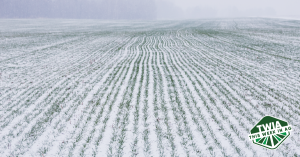This Week In Ag #112
I vividly recall the first time I planted soybeans “early”. It was over 20 years ago at the Larson place, a flat field canvassed with fertile Muscatine soil. I was stepping off the tractor to refill the planter when old Dean Simpkins pulled into the field for his obligatory gossip session. He asked how far along I was with corn planting. I knew I was about to get an earful. I replied that my corn was all in, and I was putting in soybeans. It was still mid-April. Dean’s response was predictable. “What in the **** are you thinking, Fred? You never plant beans until May!” Fast forward five months later and I harvested my highest-yielding soybean field ever. Right there on the Larson place. I never followed up to share that fact with Dean (not that it would have mattered).
Early planting soybeans may be one of the most radical shifts of a cultural practice that farming has ever seen. Granted, soybeans were long considered just a rotational crop, the stepchild, if you will, often left to scavenge for nutrients. The belief was that once all the corn was in, “the pressure was off”, as you have plenty of time to get soybeans in. Plus, soybeans require higher germination temperatures and were presumed to have greater seedling sensitivity. But the biggest hurdle may have been a resistance to change, as so eloquently stated by Dean. Today’s superior genetics are removing much of the risk of early planting by enabling seedlings to emerge faster and better withstand harsh spring conditions.
The premise for early planting is logical. Soybeans are highly responsive to light, so the more sunlight you can give them, the better they should perform. It’s all about getting ahead of the summer solstice, lengthening the vegetative growth period, and producing more blooms and pods. By closing the crop canopy sooner, you can maximize the prime sunlight of the summer solstice. The results don’t lie. A two-year study by Mississippi State showed that April-planted soybeans out-yielded May-planted soybeans by 10 bushels. These days, many farmers are planting soybeans first, ahead of even corn. It’s now common for Midwest farmers to use two planters, equipping one for corn, one for soybeans. My plan, Lord willing, is to plant my contest fields later this week. Starting, of course, with soybeans.
#EarthDay is on Tuesday. In its honor, the new documentary Common Ground airs on Amazon Prime Video. It’s the sequel to Kiss the Ground, the global sensation that touched 1 billion viewers as it chronicled pioneers of the regenerative agriculture movement, such as Ray Archuleta. As with its predecessor, expect strong, and to some, polarizing political overtones, especially given that Hollywood celebrities are involved in the narration. But please don’t let that dissuade you. Kiss the Ground was a masterpiece in both cinematography and storytelling. It provided a deep dive into the success stories of soil health practices and insights from those who transformed individual farms and vast landscapes into eco-friendly and profit-friendly operations. Gabe Brown is among those featured on the new show.
Related Posts

This Week In Ag #95
Fans of the animated Christmas classic “The Year Without a Santa Claus” will undoubtedly recall Heat Miser and Snow Miser, the bickering siblings who controlled weather patterns. Their outright refusal to cooperate with one another forced Mrs. Claus to go over their heads and see Mother Nature when she desperately needed snow to fall in

Nitrification and Denitrification in Wastewater Activated Sludge
By Heather Jennings, PE The great teeter–totter of wastewater is the nitrification and denitrification cycle in activated sludge wastewater systems. It takes both to convert ammonia to nitrogen gas! Both processes feed off of and support each other but, in some ways, they have competing needs. Nitrification consists of ripping off the hydrogen in ammonia and adding oxygen

This Week in Ag #24
Yellow airplanes were buzzing over Iowa cornfields like bumblebees over zinnias during my drive to Iowa last week. There was a time when Midwest farmers would grind their teeth at the sight of these crop dusters. It usually meant a neighbor was treating a pest problem with a costly, unplanned aerial application. And that pest problem

